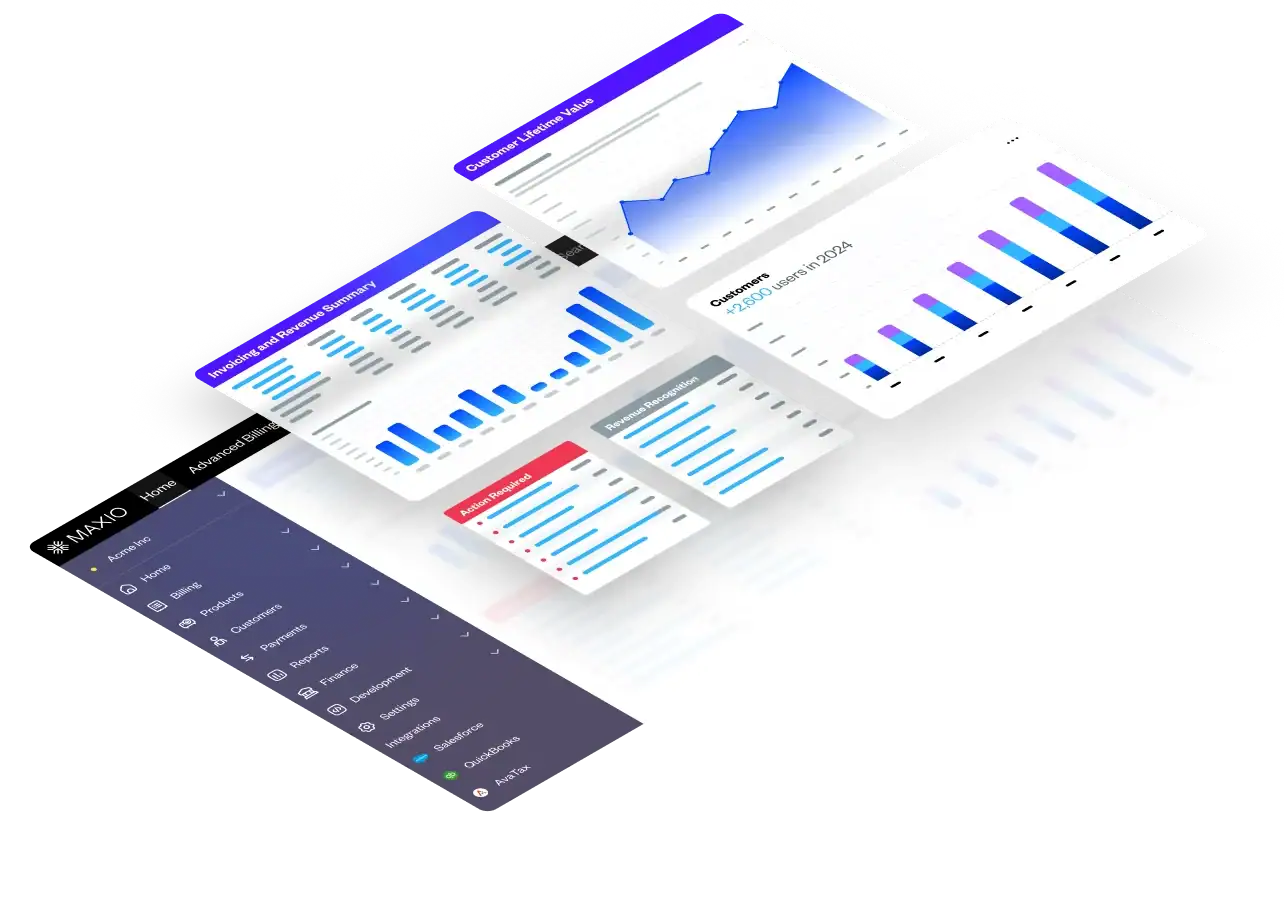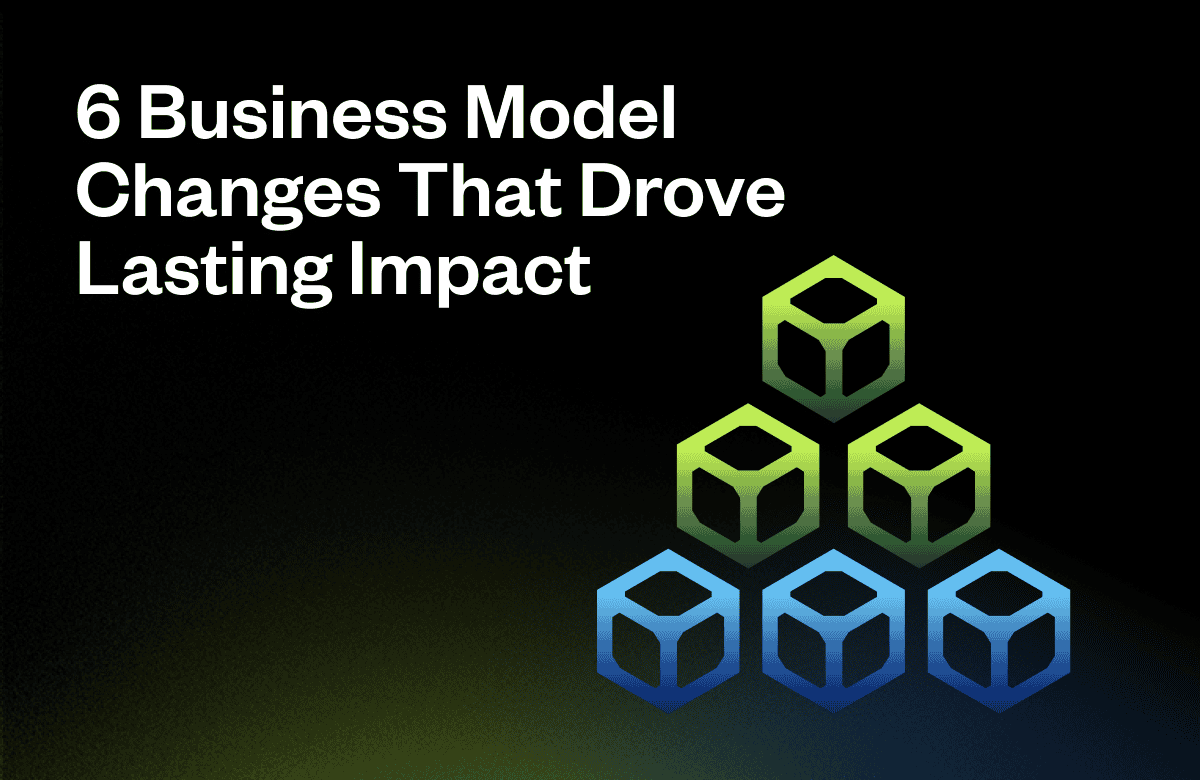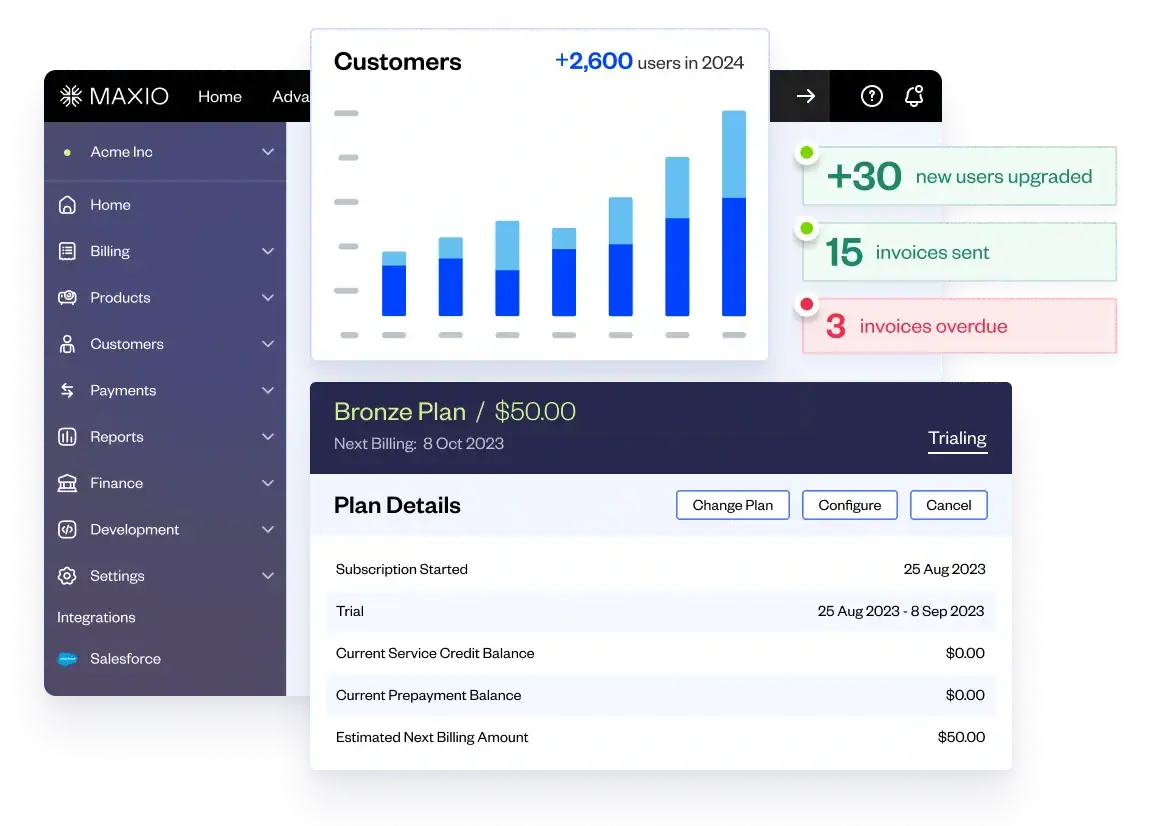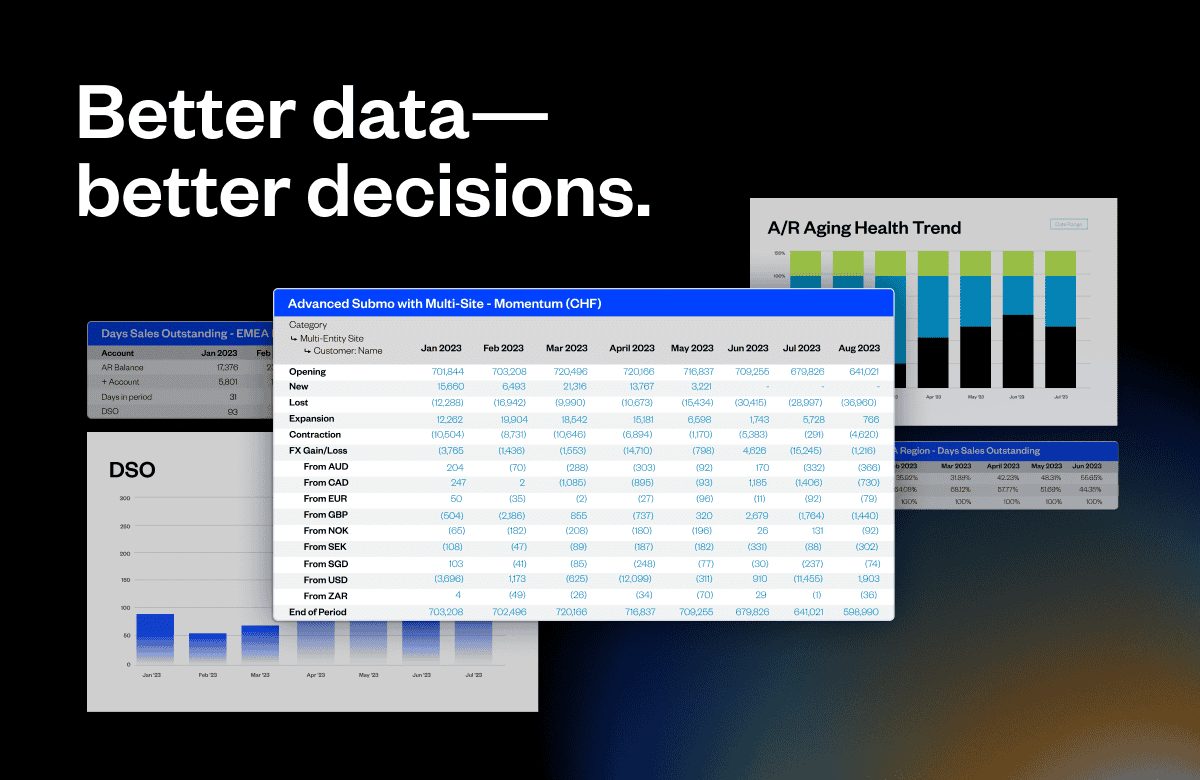For both scrappy SaaS entrepreneurs and established software companies, adapting your business model is essential if you want to tap into new markets and achieve growth. But as customer needs, software delivery models, and data monetization strategies continue to evolve, even successful SaaS firms must re-evaluate their core value proposition and paths to sustainable growth.
By studying how six pioneering companies transformed their business models to reshape entire industries, business leaders can identify approaches to drive innovation within their own organizations—before competitors force their hand. Throughout this article, we’ll show you how to successfully transform your SaaS company’s business model just like today’s current and former SaaS industry leaders.
What is Business Model Transformation?
SaaS business leaders know that standing still means falling behind. To survive and stay competitive, today’s SaaS companies must continually re-evaluate their business models and overall business strategy to align with evolving B2B buyer needs (think new technologies, shifting talent dynamics, and other marketplace changes like the role of AI in the enterprise).
This process is known as “business model transformation.”
For SaaS companies, a business model change often starts with revisiting your core value proposition—but as your buyer personas change or new buying stages emerge, what your customers define as “value” will evolve, too. With this in mind, conducting rigorous research to re-define your target customers and what outcomes they prioritize is critical. Then, this new information should directly inform updates to your product roadmap and go-to-market strategies.
However, business model transformation also means continually evaluating your monetization models, partnerships, delivery mechanisms and more to find new opportunities for value creation. For example, vertical SaaS providers may identify adjacent verticals that are ripe for entry. Meanwhile, some companies may add new functionality through partnerships or acquisitions of smaller SaaS vendors. Or, you could identify new ways to monetize your platform’s data or drive incremental revenue through new SaaS pricing models.
Ultimately, embracing business model transformation, while challenging, is essential for leading SaaS companies aiming for continued growth and sustainability. It requires acknowledging that today’s business models have an expiration date. But, companies that transform successfully often create solutions that have the potential to reshape entire industries. The rewards for SaaS leaders who can systematically explore, pilot, and scale business model innovation make the journey of transformation well worth the effort.
Knowing the Time for Change
Deciding when to overhaul an existing business model is more art than science. In other words, this isn’t something you can easily learn in a business school course—it requires hands-on work and experience. Leadership teams must combine quantitative data and qualitative insights to determine if their current business model’s days are numbered. And there are several key warning signs SaaS leaders should watch for:
The first is flat or declining revenue growth and profitability metrics. Monthly recurring revenue, churn rate, customer acquisition cost, and lifetime value are the lifeblood of all SaaS business models. If your SaaS dashboards for revenue and other key metrics reflects stagnating growth or your unit economics sliding in the wrong direction, something is broken.
You also need to listen closely to customer experiences and feedback. Are customers not adopting or regularly using key features you spent heavily to develop? Have your customer churn interviews or app store reviews taken an unusually negative tone? This subjective data should complement the hard metrics from your dashboards—cross-referencing both these qualitative and quantitative metrics should reveal what your customers value.
Another clue that will inform your decision-making is if your product or service begins primarily serving a customer segment far different than your original target persona during the business planning stages. This likely means you fundamentally missed the mark on product-market fit and who holds the greatest willingness to pay.
In isolation, any one of these signals doesn’t necessarily mean imminent doom. But together, they indicate your current SaaS business model isn’t creating differentiated value in the market anymore. When metrics reflect that reality over multiple quarters, it’s time to get back to business model innovation basics.
How to Transform Your Business Model
Going from zero to one is difficult enough for new entrepreneurs and established business leaders alike—but changing an already established business model might be even harder. If you want to transform you current business model, these are the steps you should take.
1. Assess Your Current Business Model
The first step in any existing business model transformation journey is conducting an objective assessment of your company’s current business model. This evaluation should examine both the internal realities and external dynamics in your industry to spotlight any areas where your business is failing short—revenue leakage, supply chain issues, and poor customer retention are all good examples of this.
Internally, you should gather perspectives from stakeholders across your organizational ecosystem—from your investors and executives to engineers and sales teams. Ask what parts of the current model they see as strengths vs. weaknesses that are in need of improvement.
And externally, you should research your wider business environment and where you fit in the competitive landscape. How have customer preferences, purchasing behaviors, or willingness-to-pay shifted? What substitute products or economic factors could disrupt you? How are regulatory changes opening up opportunities or restricting your platform?
This current state assessment should capture both quantitative metrics and qualitative insights on all aspects of your existing model, from your value proposition and technical architecture to partnerships and distribution channels.
2. Set Goals and Objectives
Once you’ve identified the current gaps and risks in your business, the next phase of business model transformation involves defining the future state vision and goals your organization wants to achieve (i.e. the new business model you want to create).
Most business model transformations seek to tap opportunities in terms of creating additional revenue streams, whether through entering new markets, monetizing existing assets in new ways, or some combination of the two. As a SaaS business, this may mean identifying adjacent customer segments, developing new SaaS revenue models, or pursuing a verticalization strategy.
Whatever the approach, setting transformation objectives requires identifying what future business model changes can help you deliver step-function improvements in customer value. The initiatives on your roadmap should strengthen competitive advantages that competitors cannot easily replicate. And—most importantly—your leadership team must align on a few big bets where these market opportunities, company assets, and organizational capabilities intersect.
3. Develop a New Business Strategy
Once your leadership team aligns on its business model transformation goals, the next imperative is developing an updated business strategy that clearly articulates how your company will win in these new target areas. This comprehensive strategy should detail changes across multiple dimensions, including:
Value proposition: What unmet customer needs or desires will you uniquely solve better than your competitors? How does combining your internal strengths, like product-market fit, with these external value-creation opportunities allow you to deliver a differentiated customer value prop?
Messaging: What marketing strategy, narratives, and positioning will resonate most with your new customer base based on the outcomes they care most about? How will your messaging emphasize how you excel where current leaders in your industry currently fail?
New technology: What tech innovations and roadmap priorities, whether build vs buy, will enable you to revise your value prop successfully?
Subscription management: With new customer segments and opportunities comes the need to rethink your pricing models, packaging, and subscription terms (i.e. Subscription management) to best monetize the value you deliver to customers.
Partners: Who in your industry or network can you partner with to enable success through co-innovation or leveraging shared audiences? For example, you could partner with industry thought leaders to create a newsletter or podcast, or you may partner with a service provider who uses your SaaS to act as a champion of your brand.
4. Implement Operational Changes
With a clear business strategy and future vision in place, driving business model transformation next requires adapting your internal operations, processes, and incentives to align with your revised direction.
This step operationalizes the strategy you’ve implemented to influence the way work is done in your organization across your marketing, product development, sales, and finance teams.
For example, you may consider updating the key performance indicators and actions you want to prioritize in your teams’ day-to-day decisions. Marketing may shift from focusing on lead volume to customer monetization. Your product roadmap may pivot to different or expanded capabilities. Your sales comp plans may now focus on specific new products, customer segments, or upsells. These are all examples of putting your previous plans into action.
5. Monitor and Evaluate Progress
The work of transforming business models is never complete. To ensure your initiatives stay on track, you must actively monitor your company’s progress through clearly defined metrics and feedback channels.
Your success metrics should track progress towards goals on dimensions like new customer acquisition, revenue ramp in new segments, utilization of new platform capabilities, and churn risk in your legacy customer bases, for example. Note: if you don’t currently have a way to track these metrics, you should consider setting up a dedicated SaaS dashboard vs. a band-aid solution like an Excel spreadsheet.
Then, you should continuously gather both quantitative data and qualitative customer feedback to identify what’s working versus what needs fine-tuning across your organization. However, as a business owner or leader, you should resist drawing conclusions based on anecdotes or personal intuition. Instead, you should let data guide decisions using frameworks—like the Lean Startup’s Build-Measure-Learn cycle. Using these frameworks, you can design small experiments that test critical assumptions, hypotheses, and tactics to determine what changes in your business have a positive impact on growth.
6 Examples of Successful Business Model Transformations
While plenty has been written about successful startups and entrepreneurship in general, little has been said about companies that thrived by changing their business models.
Take a look at these six companies whose ability to make a successful business model change took them to new heights.
At a Glance:
Google transformed from an unprofitable company to an advertising giant after launching its new technology, AdWords, in 2003, which quickly became its primary revenue driver.
The Transformation:
For much of its early life, Google had no business model to speak of. As Wired co-founding editor John Battelle explains in his book The Search, Google was once a maddeningly unprofitable company, fumbling left and right for a stable revenue source. After making marginally profitable forays into selling search appliances to businesses and its own search technology to other search engines, Google radically changed course.
In 2003, the company launched its AdWords program which allowed businesses to advertise to people searching for things on Google.com. Almost overnight, Google took the leap from popular search tool to an advertising juggernaut. In 2008, Google reported to the SEC that it had generated $21 billion in advertising-driven revenue alone. To this day, AdWords comprises the lion’s share of Google’s total revenue and profits. AdWords also paved the way for other search engines, such as Yahoo’s Search Marketing service and MSN’s Bing platform among others.
Lessons Learned:
Innovative business models, like Google’s AdWords, can transform a struggling company with a questionable value proposition into a market leader by effectively capitalizing on its existing assets.
At a Glance:
Facebook’s shift from an exclusive college-only network to one open to the general public sparked initial backlash but ultimately fueled its growth into the most popular social media network by 2009.
The Transformation:
In its early years, Facebook consisted entirely of college students. Unlike contemporaries Friendster and MySpace, which exhausted themselves to acquire as many users as possible from all ends of the Earth, Facebook operated more like a “secret society”, going so far as to require .edu e-mail addresses in order to join. And many of their users liked it that way, preferring Facebook’s exclusivity to the “the more the merrier” approach of other social networks.
The problem was that Facebook could only expand so much by catering to only college students. So despite much protest and uproar, Facebook founder Mark Zuckerberg decided to open Facebook to high school students in 2005. By 2006, the service had opened to anyone 13 years or older with a valid e-mail address. By and large, the strategy change has worked. A 2009 study by Compete.com found Facebook to be the most popular social network in terms if unique views and monthly visits.
The company has also sold a 1.6% stake to Microsoft for $240 million, and rumors of an IPO continue to appear.
Lessons Learned:
Expanding into new markets, even at the risk of alienating an initial customer base, can drive significant growth and long-term success.
Apple
At a Glance:
Apple’s resurgence came from a drastic business model shift in 1997, focusing on innovative new products s like the iMac, iPod, and iPhone, which led to its massive success.
The Transformation:
Not long ago, Apple was on the brink of fizzling out. From about 1993-1997, Apple found itself struggling to find a consistently profitable source of revenue, trying and failing to market everything from digital cameras to portable CD players to TV appliances. With Steve Jobs ousted due to internal squabbles, the company attempted to right ship with a revolving door of stopgap CEOs (including one former head of Pepsi-Cola.) Finally, in 1997, Jobs returned as CEO and instituted a bold change of direction.
Instead of continuing to aimlessly follow marginal product ideas down the rabbit hole, Apple began to focus once more on creating beautiful consumer electronics, starting with the iMac in 1998. Apple also acquired several companies in the video editing and digital production space, which comprises much of its customer base. The iPod was an even bigger success, selling over 100 million units within six years of its 2001 launch, according to the BBC. The iPhone, another smash hit, recently produced a 100% year-over-year rise in sales, according to CNN Money. None of this would have been possible without a drastic change in business models.
Lessons Learned:
Focusing on delivering innovative and high-quality customer experiences or spending R&D on new products can drive a company’s turnaround and lead to long-term success.
YouTube
At a Glance:
YouTube shifted from being unprofitable to nearing profitability by partnering with premium content providers and sharing ad revenue with creators, significantly boosting its revenue by 2010.
The Transformation:
In the beginning, YouTube was the textbook example of a startup taking the “we’ll worry about that later” approach to business models. When Google acquired the popular online video service for $1.65 billion in 2006, Shepard Smith of Fox News famously noted that “YouTube has yet to make even one black cent” in profit. Nor was it enough to passively run ads on the service, as a 2008 Forbes article predicted YouTube would generate just $200 million in ad revenue that year. But by March 2010, Mashable reported that YouTube’s revenue was now approaching $1 billion per year. What changed in the interim was a considerable shift in business models and overall strategy.
First, YouTube embarked on an aggressive campaign to ink partnership deals with premium content providers, including NBC, ABC, and CBS. The majority of YouTube’s content is no longer, as Forbes lamented in 2008, “attention-sapping farrago such as babies laughing and dogs splashing in wading pools.” YouTube also launched a Partner Program that allows popular users to share in the ad revenue generated by their videos. The result, as Mashable reveals, is that Google CEO Eric Schmidt now believes YouTube could turn its first profit in 2010.
Lessons Learned:
Building a diverse ecosystem through partnerships and multiple revenue streams can be a highly effective business strategy for achieving profitability and long-term growth.
Airbnb
At a Glance:
Airbnb evolved from offering overnight housing for local events to what we know it as today—a global hotel alternative that allows homeowners to offer their living spaces to guests around the world.
The Transformation:
Airbnb’s founding vision was to allow guests to access affordable lodging accommodation for events with limited hotel capacity. Their original “Air Bed and Breakfast” model focused on converting living spaces into makeshift hospitality suites. But their massive growth quickly required the Airbnb founders to rethink their assumptions as this new business model continued to iterate over time.
One of the platform’s key changes was expanding beyond shared spaces, allowing Airbnb hosts to offer up their entire homes. They also allowed guests to make instant bookings which removed unnecessary friction in their guest reservation process. Not only did this establish them as the leading alternative to your standard hotel and motel accommodations, but Airbnb would eventually allow professional property managers and boutique hotels onto their platform.
In short, Airbnb’s ability to fluidly reinvent itself and its market positioned the startup to become the hospitality category leader that we know it as today..
The Airbnb origin story highlights that lasting success requires much more than just an MVP that resonates. As customer needs change and markets evolve, adapting the business model through deliberate experimentation and iteration sustains growth trajectories.
Lessons Learned:
Continually iterating on an existing MVP—even one that’s already showing signs of success—is crucial for fledgling startups to become true industry leaders in their given vertical or category.
Datadog
At a Glance:
By leveraging key integrations, usage-based pricing, and strategic acquisitions, Datadog was able to drive growth and establish itself as a market leader.
The Transformation:
Datadog’s business model transformation can be traced back to its initial focus on cloud infrastructure monitoring. Founded to solve the challenge of visibility across complex cloud environments, Datadog quickly expanded its offerings beyond infrastructure. THen, by adding application performance monitoring (APM), log management, and security monitoring, Datadog evolved into an end-to-end observability platform.
However, the key turning point was the company’s decision to integrate across multiple cloud providers (AWS, Azure, Google Cloud) and third-party tools, allowing customers to monitor hybrid and multi-cloud environments in real-time. These integrations attracted a broader audience, ranging from IT operations to security teams, enabling Datadog to capture a larger market share.
In addition to expanding its product line, Datadog’s usage-based pricing model allowed it to scale rapidly. Customers could adopt one feature, such as infrastructure monitoring, and later expand into APM or security as their needs evolved, all within the same platform. This strategy ensured customer retention and increased revenue per user, allowing Datadog to grow with its clients over time.
Datadog has also consistently pursued an acquisition strategy, bringing in companies like Sqreen (application security), Timber (log management), and others to strengthen its platform. This, combined with its focus on providing a unified experience, positioned Datadog not only as a leader in monitoring but also as a solution for enterprises transitioning to cloud-native architectures.
Lessons Learned: Adapting a business model to include diverse, complementary products and services while leveraging strategic acquisitions can drive significant growth and market leadership.
The Takeaway
The lesson here is that business model changes were not incidental footnotes in the histories of these businesses. Rather, in each case, the changes that were made unlocked new dimensions of value creation and profitability—heights that would never have been reached by staying the course. Embracing a new business model not only opens the door to new opportunities but also requires the foresight to recognize that existing strategies are ill-suited for the future and the discipline to enact fundamental shifts in corporate focus.






